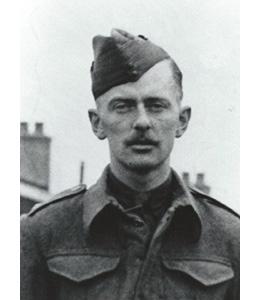George was the youngest of the three sons of Colonel Sir Charles Dillwyn-Venables-Llewelyn, J.P., D.L., 2nd Bt. and of Lady Llewellyn (nee Katharine Minna Lister Venables) of Llysdinam, Newbridge-on-Wye, Radnorshire. His eldest brother was killed in action in 1917.
He was educated at Marlborough and matriculated in 1929. After graduating, he became a Member of the Institute of Civil Engineers [MICE] and was an Assistant Engineer with Sir Alexander Gibb and Partners, consulting civil engineers.
At the outbreak of the war, he joined the Royal Engineers and was attached to the 53rd (Welsh) Div. with the rank of 2nd Lieutenant. He went to Norway with No. 2 Independent Company.
He was Mentioned in Dispatches during the Battle for Narvik.
He was killed in action on 26 May and is buried in the Saltdal Main Churchyard, British Plot A 7.
With thanks to his nephew.
The Llysdinam Estate is owned by the Llysdinam Charitable Trust and run by the School of Biosciences at Cardiff University. It is based near the village of Newbridge-on-Wye in Mid-Wales, some 70 miles north of Cardiff. on which the Field Centre was established It is the home of the Dillwyn-Venables-Llewelyn family who have a long history of interest in science and the environment. The Dillwyn-Llewelyns came from Penllergaer, near Swansea and were one-time owners of the Nantgarw china factory. John Llewelyn was a colleague of Wheatstone (of "bridge" fame) and, through family marriage, was connected to Fox Talbot (the photographic pioneer), he himself also becoming well-known in this field. The Dillwyn side of the family boasted one of the most famous botanists of the period and several members of the family became Fellows of the Royal Society. The Dillwyn-Llewelyns moved to Llysdinam in the 1830s. Marriage brought the Venables name into the family and, because the Rev. Venables was vicar of Clyro (opposite Hay on Wye), his curate, Francis Kilvert, the famous diarist, became a regular visitor to the house.


